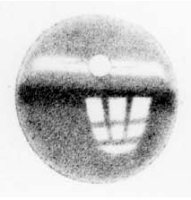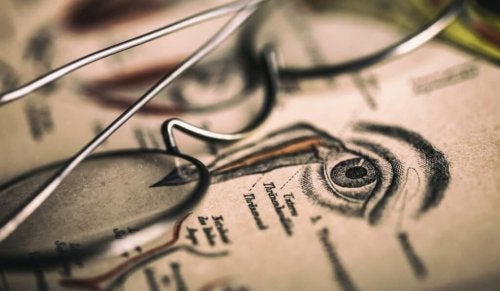The article is written by P.Hariharan, from Central law college, Salem, Tamil Nadu.
Table of Contents
Introduction
In recent trends both in civil and criminal trial, forensic science acts as an aid and lead to many successful police investigations and decisions taken by judiciary.
When there is any ambiguity in a case, the opinion of a forensic expert gives a pathway for trial and police investigation to proceed.
Hence, the aid of forensic acts as a legal evidence in judiciary which determines one’s fate on acquittal or conviction in criminal cases and also determines the ownership rights on property and thereof in civil cases on the basis of documentary evidence produced. Thus, there are many techniques that are utilized by forensic for the determination of evidence in criminal cases and one among them is ‘Optography’. Earlier this method was adopted in forensic in many murder trial. The uniqueness of this method is the retina of the deceased victim is seized immediately and retrieves the ‘Last Seen Image’ by the deceased victim at the moment of the death. Though contemporarily Optography is absolutely neglected due to certain flaws and drawbacks, this strategy proved to be very effective earlier as it retrieves the image of the accused that is imprinted in victim’s retina at the moment of the victim’s death/ murder caused by the accused. Thus, this aided judiciary to bring a conclusion to many criminal cases. Therefore, ‘Optography’ which earlier took forensic to its zenith, is now a forgotten phase of forensic.
Optography
The concept of retrieving the last seen image in the retina at the moment of death was first put forth by a Jesuit Friar named ‘Christopher Schiener’ in 17th century because he claimed that he saw a faint image imprinted upon the retina of the Dead Frog, perhaps it did not made any far-reaching effect.
Later in 1840, photography was discovered, where the people regarded the way a camera worked was similar in many respects to the way the human eye worked i.e. human eye could capture image and be recorded in retina just as photography.
On the inspiration of Franz Christian Boll’s discovery of Rhodopsin (a pigment within the Rods of retina which are sensitive to light and enables vision, where it fixes a Photographic Negative in retina even after Death), a German Physiologist named ‘Wilhem Kuhne’ performed numerous experiments on Optography, later it was proved as a scientific approach.
Kuhne experimented on numerous animals to refine the process of fixing the image on the retina, where he successfully obtained Optogram from an Albino Rabbit by decapitating it. Thus, on the application of Optography technique on the rabbit he obtained a distinct image of the barred windows (Fig.1).

Fig.1: Albino Rabbit’s last seen image
Of course, his real goal was to test this process on a human being and he also attempted to obtain the ‘Human Optogram’ from the executed convict on November 16, 1880. As soon as he obtained the retina of the convict, he applied the Optography technique and he successfully obtained a distinct image of the blade of the Gullitone and it was regarded as the first obtained Human Optogram (Fig.2). Yet, this fact was disputed by many scientist claiming that it appears like a steps which leads to the platform of the Gullitone and not exactly the Gullitone. However, the experiments proved to be very popular and was pursued throughout the 19th and 20th centuries.

Fig2: Kühne’s drawing of the optogram he saw in the eye of an executed man in 1880.
Optograhy: As a Legal Evidence in Judiciary
Earlier Optography was regarded as a scientific approach, but now it is criticised due to its flaws. Further, its technique is not now recognized as a scientific approach. During the golden period of Optography which existed earlier, this technique was significantly used by judiciary in trial and also by police in investigating the case. Thus, this aided them to identify the accused at the earliest.
Earlier, Optography was regarded as a ‘Legal Evidence’ by the judiciary. Where an instance in an American case Eborn vs. Zimpleman, 47 Tex. 503 (1877) it was held that:
“Every object seen with the natural eye is only seen because photographed in Retina. In life the impression is transitory; it is only when death is at hand that it remains permanently fixed on the retina. Thus, we are secure in asserting that no witness ever swore to a thing seen by him, without swearing from a Photograph. What we call sight is but the impression made on the mind through the Retina of the eye, which is Nature’s Camera. Science has discovered that a perfect photograph of an object, reflected in the eye of one dying, remains fixed on the retina after death…………We submit that the Eye of the dead man would furnish the best evidence that the accused was there when the deed was committed.“
Moreover, this forensic technique was also used as a legal evidence in murder trial held in Germany, where a merchant ‘Fritz Angerstein’ was charged with killing eight members of his family. So, the Jury directed the Prof. Doehne, professor at the University of Cologne, to retrieve the Optographic image from the deceased eye, and he successfully obtained it. In that Optographic image, it yielded Angerstein’s face and an Axe he used to kill. Thus, the Optographic image was regarded as a legal evidence in that case for which he was tried and executed on the basis of that Optographic image.
Further, a famous murder trial case held in England, where Constable P.C. Gutteridge was shot dead and his eyes were also shot down by the accused, so that there were no possibilities to retrieve the Optographic image and thus it was difficult to find the accused. Hence, this depicts that earlier some parts of the world recognised Optography as a Forensic Science and also as a ‘Legal Evidence’ in Judiciary.
In addition to that, Optography was instrumental to many police investigations and sometime this method was adopted unofficially to crack the mystery behind the criminal cases. Earlier, it is said that police done investigation only on the basis of Optographic image retrieved from the deceased eye and thus this decides the fate of the cases. Moreover, it is said that this Optography technique was unofficially utilized in famous case named “Jack the Ripper” (which was held in England) and the Serial killer was found out. The same technique was also applied in catching the murderer “Dr. Crippen”. Thus, earlier this was regarded as one of the best method in forensic.
The very first downfall in Optography occurred in an American murder trial. In this case, a young woman named Theresa Hollander was murdered by his boyfriend Anthony Petras. Since her eyes were wide open in utter horror there was a strong hope that through the process of retrieving the Optograhic Image from the deceased eye, Petras would be convicted. Perhaps, it led to utter failure because the image retrieved were faded and blurred. So, the results proved inconclusive and thus acquitted the accused.
Flaws and Criticisms on Optography
In the passage of time, the popularity of Optography as a potential forensic tool faded. Further, W.C. Ayers, an American Physician, in his Article named “New York Medical Journal” and Dr.Alexandridis, professor at University of Heidelberg, in his work in “The Pupil and Electro Diagnostic Opthalmology” had pointed out certain flaws which are the reason for rejecting the theory of Optography:
- The victim’s eyes had to be removed immediately as soon as the death occurred. However, it is impracticable since there are certain murder cases which comes to knowledge only after a couple of days.
- Though the eyes were removed immediately and credible procedures were employed to retrieve the optographic image, the images retrieved were too hazy, faded or blurred, which made it is impossible to have clarity in the findings.
Thus, these are the major flaws and defects that made the concept of Optography to fade away in the Sands of Time.
Conclusion
Thus, earlier Optography which was regarded as a forensic method is now rejected and disregarded due to its flaws and drawbacks, and therefore it has become ‘The Forgotten phase of Forensic Science’.
Sometimes something that looks like a breakthrough technology may turn out to be a disappointment later. Optography’s decline shows why we should not take every shiny new technology without a pinch of salt – until we have conclusive evidence about the efficacy of the same.
Note: To know about the procedure to retrieve an optographic image, visit:
- Last sights of the Dead: The weird Science of Optography, Brent Swancer https://mysteriousuniverse.org/2017/01/last-sights-of-the-dead-the-weird-science-of-optography/.
- Optograhy, Wikipedia https://en.m.wikipedia.org/wiki/optography.
LawSikho has created a telegram group for exchanging legal knowledge, referrals and various opportunities. You can click on this link and join:
 Serato DJ Crack 2025Serato DJ PRO Crack
Serato DJ Crack 2025Serato DJ PRO Crack










 Allow notifications
Allow notifications



